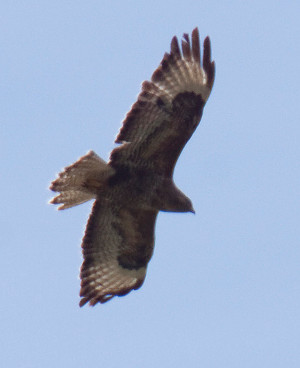
Buzzard (photo: ahisghett)
The latest PAW (Partnership for Action against Wildlife Crime) Scotland Poisoning Hotspot Maps, show Scotland’s birds of prey continue to be poisoned with illegal chemicals.
Figures from the Science and Advice for Scottish Agriculture (SASA) show 28 birds were poisoned between January and December 2010.
This was one more than in the previous year and means that 132 birds of prey have been deliberately killed in the last five years.
The maps show where confirmed poisonings have taken place and the Scottish Government, RSPB Scotland and the Scottish Rural Property and Businesses Association have all been involved in their publication on behalf of the PAW Scotland Raptor Persecution Priority Delivery Group.
Environment minister Roseanna Cunningham attended the launch at the Doune Estate in Perthshire.
She said: “It’s disappointing to see that there has been no improvement in the number of birds of prey being deliberately and illegally poisoned in Scotland in the last 12 months.
“The fact that 132 of these iconic species have been targeted in the last five years is unacceptable.
“It’s especially sad that some of the victims, such as sea eagles, are part of reintroduction programmes and there really has to be a change in attitude amongst those who are persistently involved in killing raptors.
“We are taking measures to tackle this problem and have introduced a new vicarious liability offence as part of the Wildlife and Natural Environment (Scotland) Bill to make sure that those who direct or turn a blind eye to bird persecution can be held to account.”
The PAW Scotland maps showing details of killed birds can be found here.
